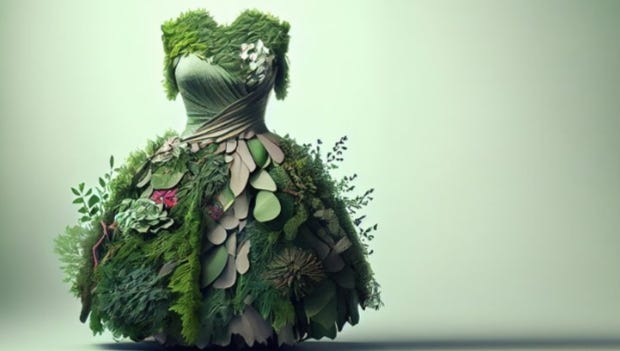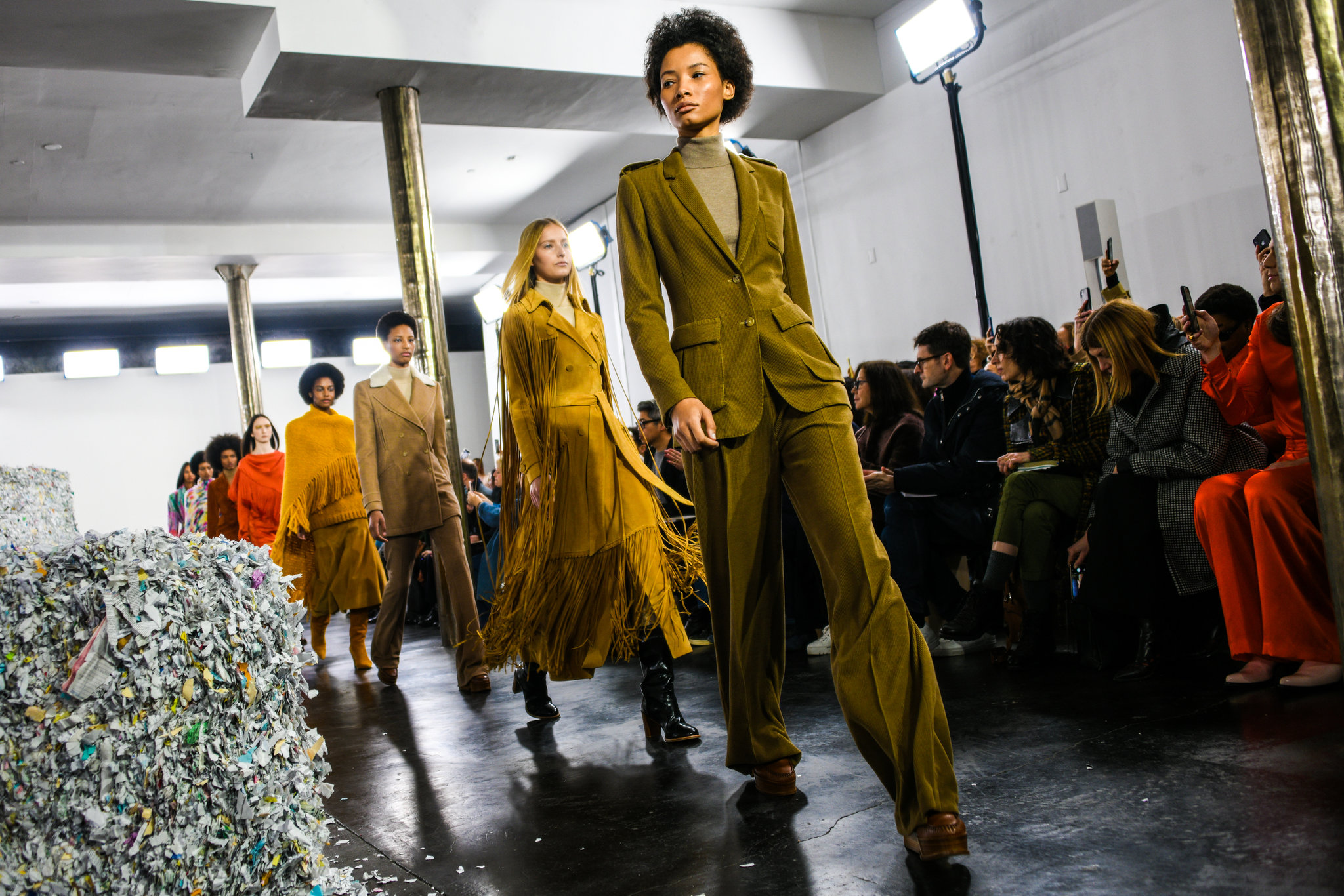The Rise of Sustainable Fashion: Trends, Challenges, and Impacts
In recent years, there has been a noticeable shift in the fashion industry towards sustainability, driven by growing consumer awareness and concerns about the environmental and social impacts of fast fashion. This trend marks a significant departure from the traditional model of mass production and consumption, as brands and consumers alike prioritize ethical practices, environmental stewardship, and social responsibility. In this article, we explore the rise of sustainable fashion, examine key trends and challenges facing the industry, and assess its broader impacts on society and the environment. Trends in Sustainable Fashion
Trends in Sustainable Fashion
The rise of sustainable fashion encompasses a wide range of practices aimed at reducing the industry's carbon footprint, minimizing waste, and promoting ethical labor standards. From eco-friendly materials and production techniques to fair trade practices and circular fashion initiatives, brands are adopting innovative approaches to sustainability throughout the supply chain. Organic cotton, recycled polyester, and plant-based alternatives to leather are becoming increasingly popular choices for eco-conscious consumers, while digital technologies such as blockchain are being leveraged to enhance transparency and traceability in the production process.
Furthermore, the concept of "slow fashion" has gained traction as an alternative to the fast-paced, disposable nature of conventional clothing consumption. Slow fashion emphasizes quality over quantity, encouraging consumers to invest in timeless pieces that are made to last, rather than succumb to trends that quickly go out of style. This shift towards more mindful consumption reflects a broader cultural shift towards sustainability and conscious living, as people seek to align their values with their purchasing decisions. Challenges Facing the Sustainable Fashion Industry
Challenges Facing the Sustainable Fashion Industry
Despite the growing momentum behind sustainable fashion, the industry faces several challenges that hinder its widespread adoption and impact. One of the primary challenges is the high cost associated with sustainable production methods and materials. Eco-friendly fabrics and ethical labor practices often come at a premium, making sustainable fashion less accessible to lower-income consumers and perpetuating socioeconomic disparities within the industry. Moreover, achieving true sustainability in fashion requires systemic changes that extend beyond individual brands and consumers. Supply chain transparency, waste management, and the implementation of circular economy principles present formidable challenges that require collaboration among stakeholders across the industry. Additionally, consumer behavior and attitudes towards fashion consumption play a crucial role in shaping the future of sustainability in the industry. Education and awareness-raising efforts are needed to foster a culture of conscious consumption and empower consumers to make informed choices.
Moreover, achieving true sustainability in fashion requires systemic changes that extend beyond individual brands and consumers. Supply chain transparency, waste management, and the implementation of circular economy principles present formidable challenges that require collaboration among stakeholders across the industry. Additionally, consumer behavior and attitudes towards fashion consumption play a crucial role in shaping the future of sustainability in the industry. Education and awareness-raising efforts are needed to foster a culture of conscious consumption and empower consumers to make informed choices.
Impacts of Sustainable Fashion on Society and the Environment
The rise of sustainable fashion has the potential to generate positive impacts on both society and the environment. By prioritizing ethical labor practices and fair wages, sustainable brands contribute to the livelihoods of workers in the fashion supply chain, particularly in developing countries where garment manufacturing is a significant source of employment. Furthermore, initiatives that promote local production and craftsmanship support artisanal communities and preserve traditional techniques that are at risk of being lost. From an environmental perspective, sustainable fashion offers a more eco-friendly alternative to conventional clothing production, which is notorious for its resource-intensive processes and contribution to pollution and waste. By using organic and recycled materials, minimizing water usage, and adopting circular business models that prioritize repair, reuse, and recycling, sustainable brands reduce their environmental footprint and mitigate the negative impacts of fashion on ecosystems and biodiversity.
From an environmental perspective, sustainable fashion offers a more eco-friendly alternative to conventional clothing production, which is notorious for its resource-intensive processes and contribution to pollution and waste. By using organic and recycled materials, minimizing water usage, and adopting circular business models that prioritize repair, reuse, and recycling, sustainable brands reduce their environmental footprint and mitigate the negative impacts of fashion on ecosystems and biodiversity.
Future Directions and Opportunities
Looking ahead, the sustainable fashion movement presents exciting opportunities for innovation, collaboration, and positive change within the industry. As consumer demand for sustainable products continues to grow, brands have the opportunity to differentiate themselves by adopting transparent supply chains, investing in eco-friendly technologies, and prioritizing social and environmental impact alongside profitability. Technology, in particular, holds immense potential to drive progress in sustainable fashion. Advancements in material science, such as the development of bio-based textiles and lab-grown materials, offer promising alternatives to traditional fabrics with lower environmental footprints. Similarly, digital tools and data analytics can enhance supply chain transparency, traceability, and efficiency, enabling brands to make more informed decisions and address issues such as waste reduction and ethical sourcing.
Technology, in particular, holds immense potential to drive progress in sustainable fashion. Advancements in material science, such as the development of bio-based textiles and lab-grown materials, offer promising alternatives to traditional fabrics with lower environmental footprints. Similarly, digital tools and data analytics can enhance supply chain transparency, traceability, and efficiency, enabling brands to make more informed decisions and address issues such as waste reduction and ethical sourcing.
Moreover, the sustainable fashion movement has spurred the emergence of new business models and collaborative initiatives aimed at accelerating progress towards sustainability. From clothing rental and resale platforms to collaborative design networks and industry coalitions, stakeholders across the fashion ecosystem are coming together to share knowledge, resources, and best practices. By fostering a culture of innovation and cooperation, these initiatives have the potential to drive systemic change and create a more sustainable future for the fashion industry.
The sustainable fashion movement is not merely a passing trend but a fundamental shift in consumer behavior and industry practices. Brands that embrace sustainability are not only meeting the demands of today's conscious consumers but also positioning themselves for long-term success in a rapidly evolving market. As awareness of environmental and social issues continues to grow, the momentum behind sustainable fashion shows no signs of slowing down. By prioritizing transparency, innovation, and collaboration, the fashion industry has the opportunity to drive meaningful change and create a more sustainable future for generations to come. Conclusion
Conclusion
In conclusion, the rise of sustainable fashion represents a paradigm shift in the way we produce, consume, and think about clothing. By prioritizing environmental stewardship, ethical labor practices, and social responsibility, sustainable fashion offers a vision of a more equitable, resilient, and regenerative fashion industry. While challenges remain, from the high cost of sustainable production to the complexities of supply chain management, the momentum behind the sustainable fashion movement continues to grow, driven by increasing consumer awareness and demand for ethical and eco-friendly products. As we navigate the transition towards a more sustainable fashion industry, collaboration, innovation, and collective action will be key to realizing the vision of fashion that is not only beautiful and stylish but also ethical, inclusive, and environmentally conscious.




























